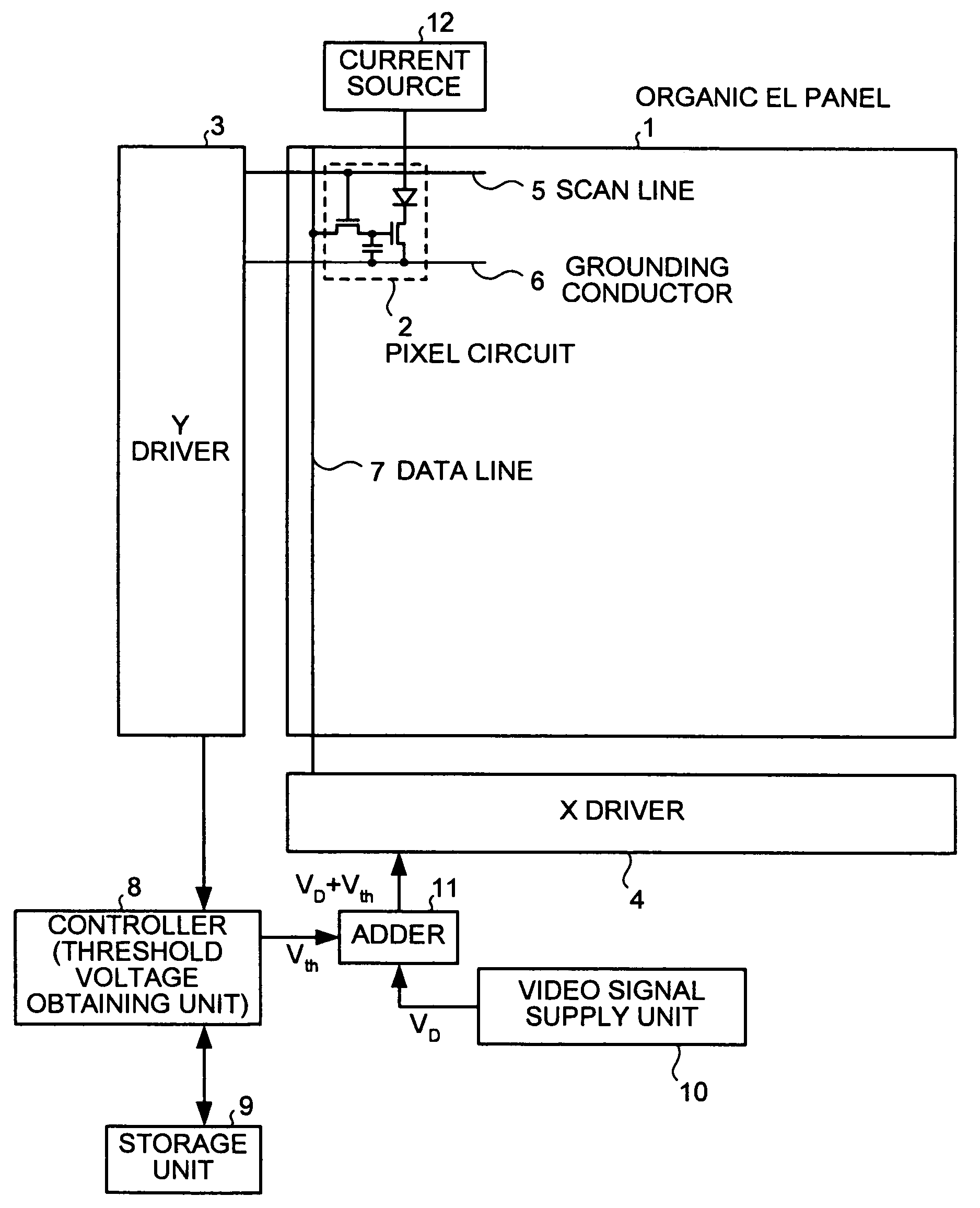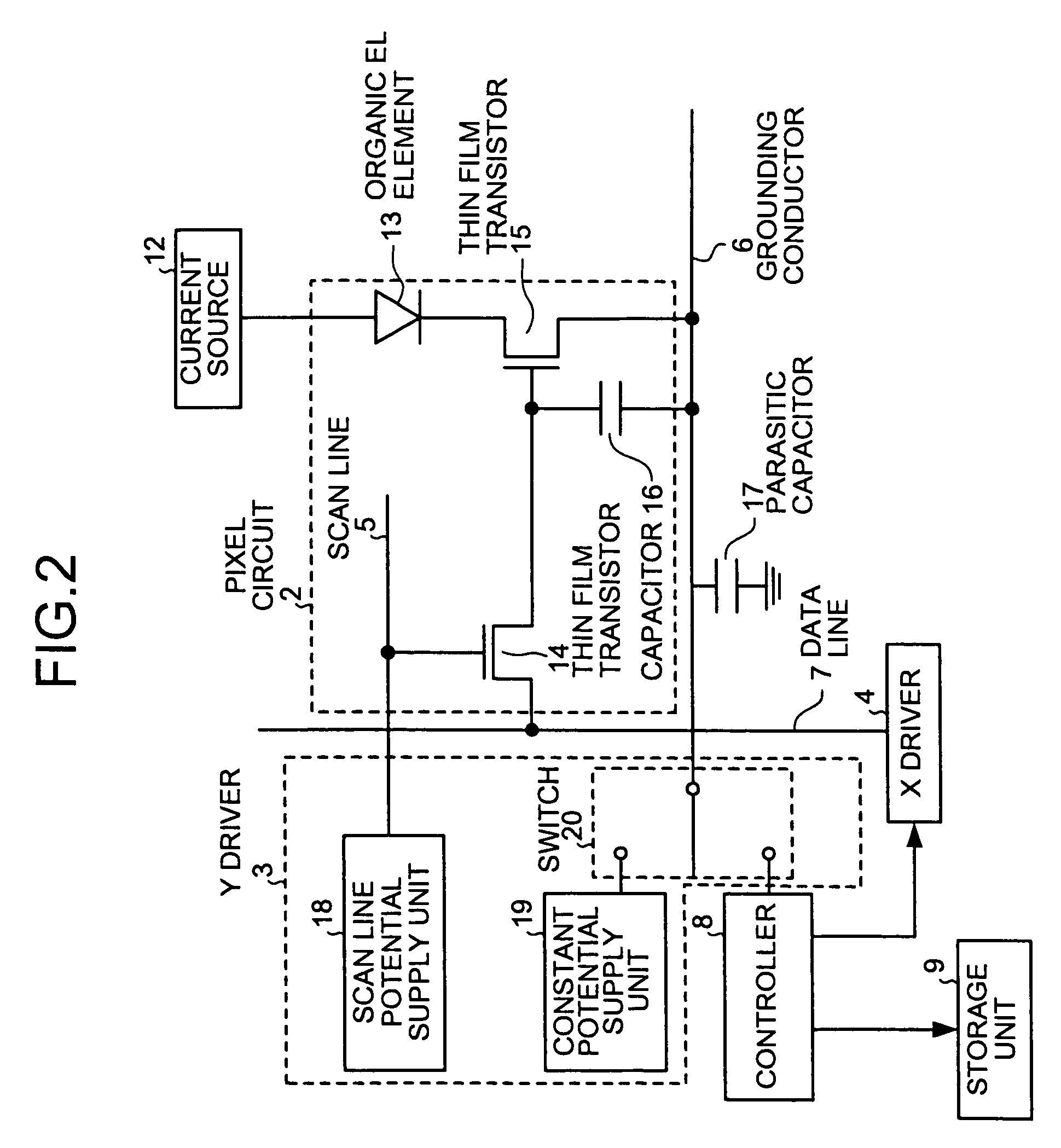Image display apparatus using current-controlled light emitting element
a technology of light emitting element and image display, which is applied in the direction of identification means, instruments, static indicating devices, etc., can solve the problems of difficulty in maintaining high-quality image display, difficulty in displaying high-quality images, and difficulty in realizing large-size and high-definition displays
- Summary
- Abstract
- Description
- Claims
- Application Information
AI Technical Summary
Benefits of technology
Problems solved by technology
Method used
Image
Examples
first embodiment
[0026]An image display apparatus according to the present invention is explained below. The image display apparatus is an active matrix image display apparatus using a thin film transistor as a driver element. A gate-source voltage is obtained by a controller so that the driver element is made to be on-state once in a state in which potential control of a grounding conductor that is connected to the driver element is stopped, charge is accumulated in the grounding conductor, and after this, the driver element becomes off-state again. Upon displaying an image, the threshold voltage obtained and a data voltage corresponding to a display brightness are applied to the gate electrode of the driver element to perform image display.
[0027]FIG. 1 is a schematic diagram of the entire configuration of the image display apparatus according to the first embodiment. As shown in FIG. 1, the image display apparatus according to the first embodiment includes an organic EL panel 1 with a large number...
second embodiment
[0057]FIG. 6A to FIG. 6C are diagrams for illustrating process of measuring source electrode potentials of the thin film transistor 15 according to the FIG. 7 is a graph of a variation in source electrode potential of the thin film transistor 15 upon measuring the source electrode potential and of a variation in the gate-source voltage. As shown in FIG. 7, a curve 1, represents a variation in the source electrode potential and a curve 12 represents a variation in the gate-source voltage. Measurement of the source electrode potential is explained below with reference to FIG. 6A to FIG. 6C and FIG. 7.
[0058]As shown in FIG. 6A, a connection destination of the grounding conductor 6 is switched to the controller 8 by the switch 20 to cause the potential of the scan line 5 to rise, and the thin film transistor 14 as the switching element is made to be on-state. The gate electrode of the thin film transistor 15 is provided with a potential Vg supplied from the data line 7 to become on-sta...
PUM
 Login to View More
Login to View More Abstract
Description
Claims
Application Information
 Login to View More
Login to View More - R&D
- Intellectual Property
- Life Sciences
- Materials
- Tech Scout
- Unparalleled Data Quality
- Higher Quality Content
- 60% Fewer Hallucinations
Browse by: Latest US Patents, China's latest patents, Technical Efficacy Thesaurus, Application Domain, Technology Topic, Popular Technical Reports.
© 2025 PatSnap. All rights reserved.Legal|Privacy policy|Modern Slavery Act Transparency Statement|Sitemap|About US| Contact US: help@patsnap.com



